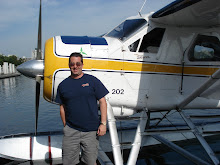Betty Skelton (Frankman) 1926-2011
 High-flying, fast-driving Betty Skelton (later Frankman) was born in Pensacola, Fla., in 1926. At age 12, she soloed in an airplane. By 1950, Ms. Skelton and her open-cockpit biplane, Little Stinker, were famous worldwide. From 1948 to 1950 she won three international aerobatics competitions for women.
High-flying, fast-driving Betty Skelton (later Frankman) was born in Pensacola, Fla., in 1926. At age 12, she soloed in an airplane. By 1950, Ms. Skelton and her open-cockpit biplane, Little Stinker, were famous worldwide. From 1948 to 1950 she won three international aerobatics competitions for women.One of her specialties was a maneuver known as "the inverted ribbon cut," in which she flew her plane upside down, 10 feet above the ground, and sliced through a ribbon stretched between two poles.
In 1949 and 1951 she set the world light-plane altitude record. In a car, she set the women's land-speed record three times at Daytona Beach, Fla., the last time being 1956 when she hit 145.044 m.p.h. in a Corvette (the men's record was only 3 m.p.h. faster). In 1951 she broke the North American transcontinental speed record for driving coast-to-coast from New York to Los Angeles, covering 2,913 miles in 56 hours 58 minutes (an average of more than 51mph). Two years later she crossed South America, from Buenos Aires to Valparaiso in Chile, in 41 hours 14 minutes.
In 1960, when the Mercury astronauts were making headlines, Look magazine asked Betty Skelton to undergo the same rigorous physical and psychological training regime ordained by Nasa. She passed every test, winning the respect of the seven Project Mercury astronauts, who nicknamed her “number 7½”. Betty Skelton set her last major land-speed record when she took a jet-powered car to a speed of more than 315mph at Bonneville in 1965.
She held more combined aviation and automotive records than anyone else - man or woman - in history.


<< Home